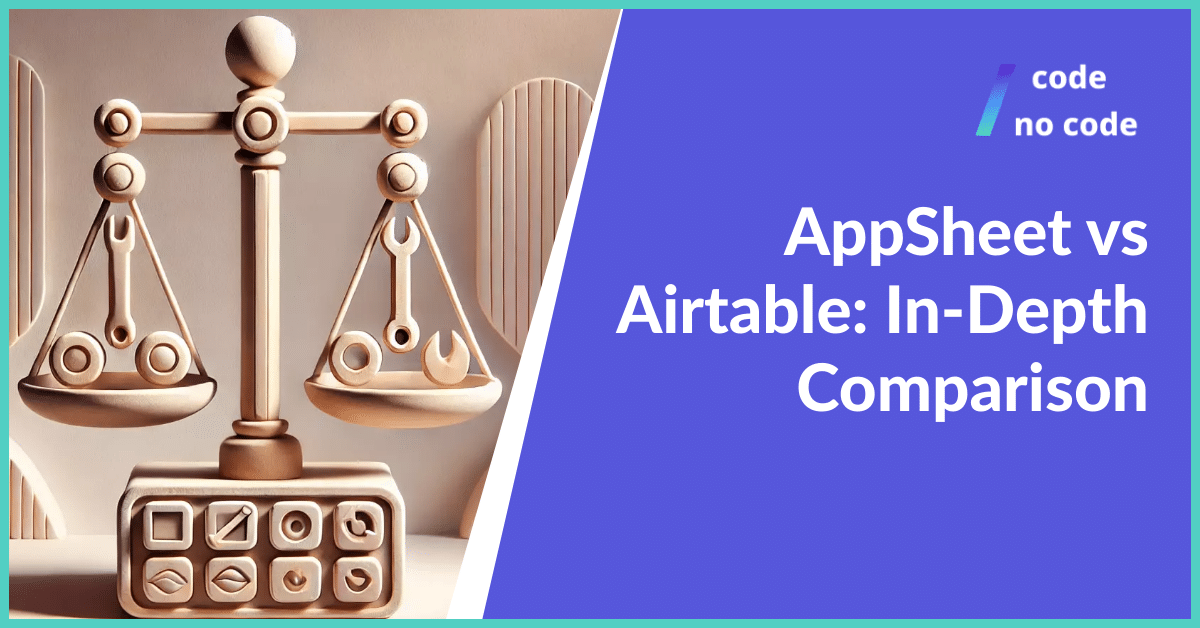
AppSheet vs Airtable: In-Depth Comparison
If you’re deciding between AppSheet and Airtable, knowing their differences is important. Both tools are designed to build apps and manage data without coding. This guide will...
In 2023, the no code movement experienced significant growth and transformation, marking a pivotal year in democratizing software development. Key takeaways from no code review 2023 included:
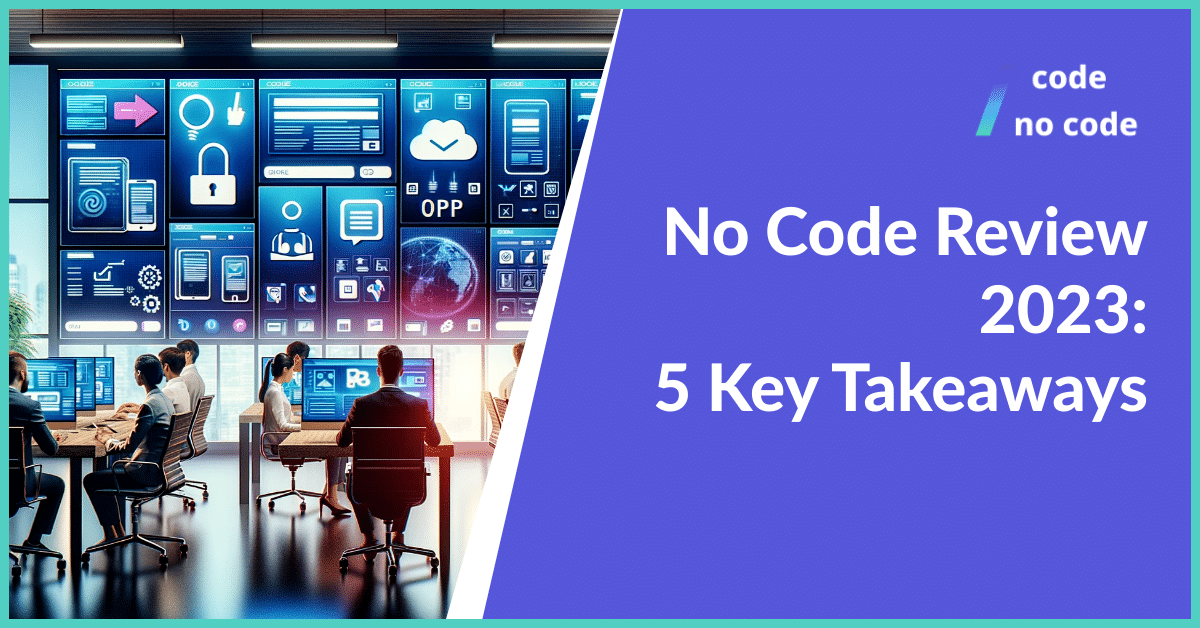
These developments underscore the no code movement’s evolution, empowering users with more accessible, efficient, and powerful tools for digital creation.
In 2023, emerging AI no code tools revolutionized the landscape of software development. Platforms like Softr, Bardeen, Framer, and Flutterflow introduced AI-driven functionalities, enabling users to generate complex apps, workflows, and websites with minimal coding.
These tools harness AI to automate tasks, optimize user interfaces, and provide intuitive design experiences. They’re transforming how individuals and businesses approach software development, making it more accessible and efficient.
This trend not only democratizes technology creation but also enhances productivity, encouraging innovation across various sectors. As these AI no code tools evolve, they promise to further simplify and accelerate digital solution development.
Softr, a leading AI-powered no code app generator, has significantly impacted the tech landscape in 2023. It simplifies app creation, allowing users with minimal technical skills to build custom web applications and business solutions.
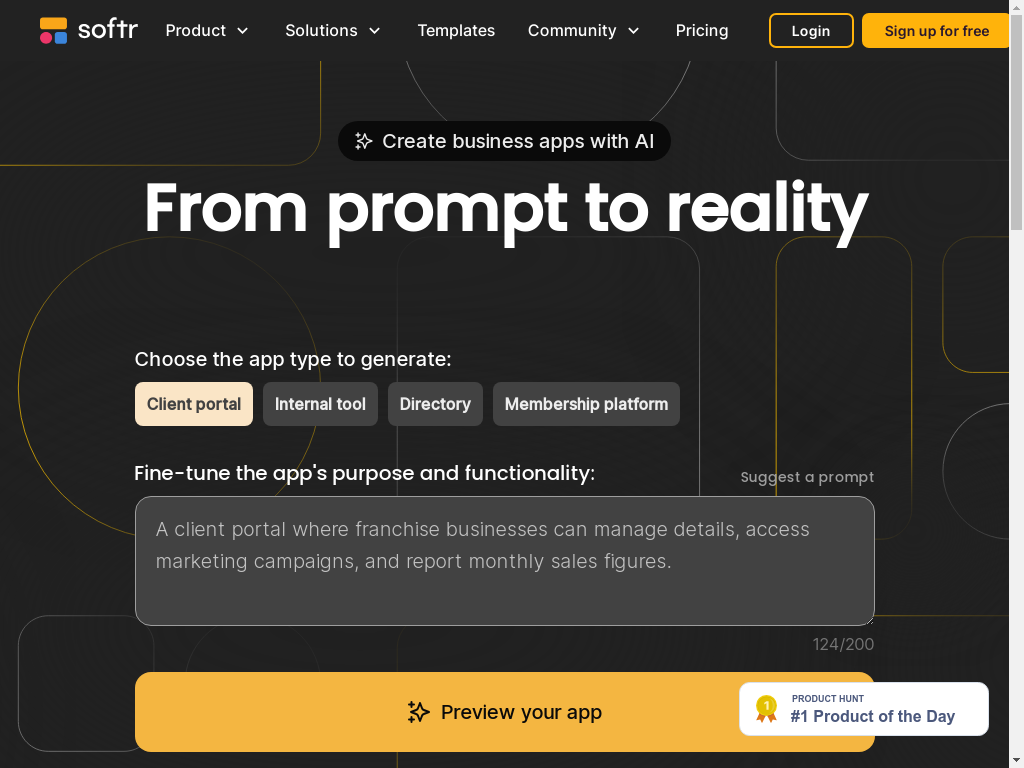
Utilizing AI, Softr streamlines design and development processes, offering drag-and-drop ease, pre-built templates, and seamless integrations with databases and third-party services.
This democratization of app development has enabled entrepreneurs, small businesses, and creators to rapidly deploy functional apps without the steep learning curve or cost of traditional software development.
Softr’s approach exemplifies the shift towards more inclusive, efficient, and innovative digital solution creation.
Bardeen, an innovative AI workflow generator, emerged in 2023 as a game-changer in the no code sector. It leverages artificial intelligence to automate and streamline complex workflows, enabling users to efficiently execute tasks without coding knowledge.
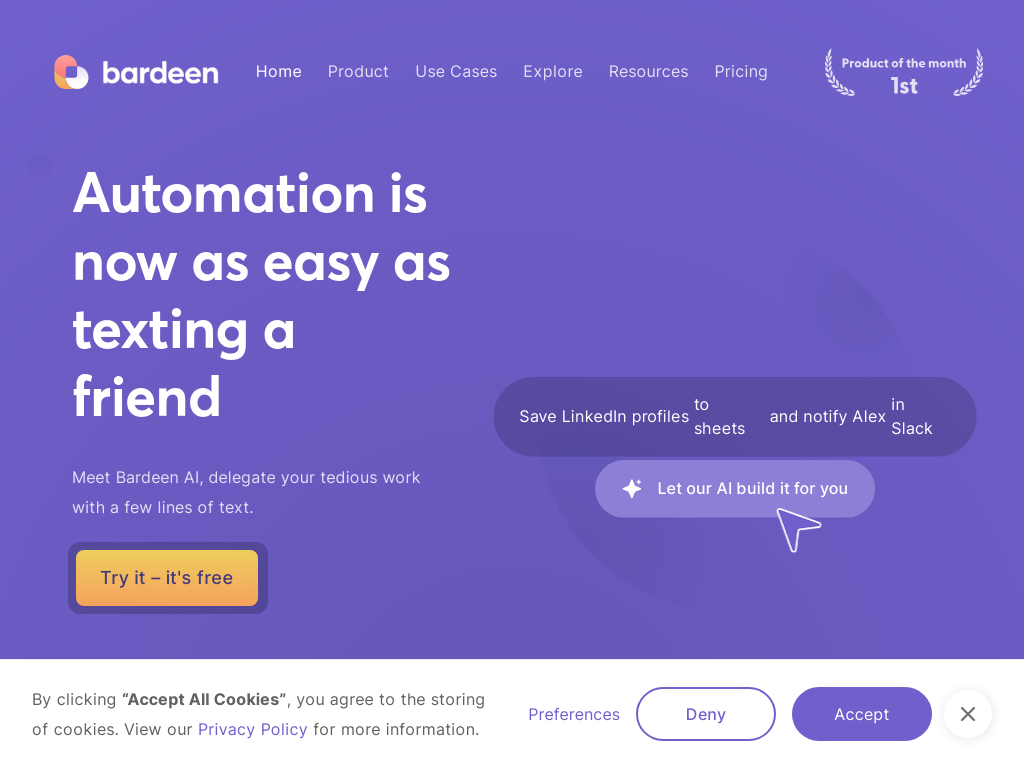
Bardeen’s intuitive interface allows for easy creation of custom automation sequences, integrating various web services and applications. This tool significantly reduces manual effort and enhances productivity for businesses and individuals alike.
By simplifying complex processes and making automation accessible to a wider audience, Bardeen is revolutionizing how people interact with technology, paving the way for more efficient, automated digital environments.
Framer, an AI-driven website generator, emerged in 2023 as a standout tool in the no code arena. It empowers users to create aesthetically pleasing, responsive websites without coding expertise.
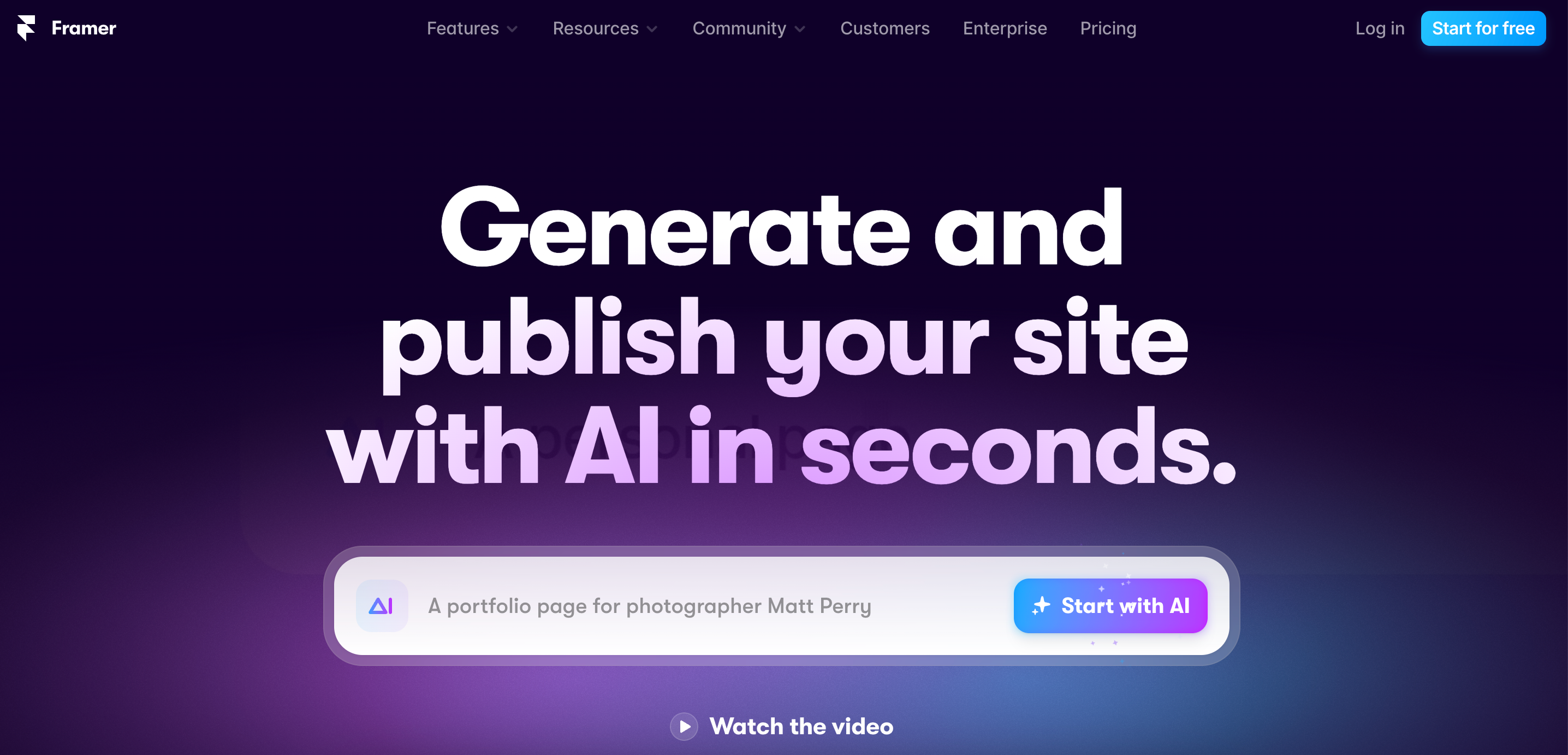
Framer’s AI algorithms assist in design decisions, layout optimization, and interactive elements, ensuring high-quality web presence. This tool significantly lowers the barrier to entry for web design, making it accessible to entrepreneurs, designers, and small businesses.
Its impact is profound, democratizing web development and enabling rapid deployment of professional websites. Framer’s contribution to the no code movement highlights a shift towards more user-friendly, efficient, and ease to create digital solutions.
At BubbleCon 2023, Bubble announced a significant artificial intelligence integration into its no code platform, marking a pivotal moment in the no code sector.
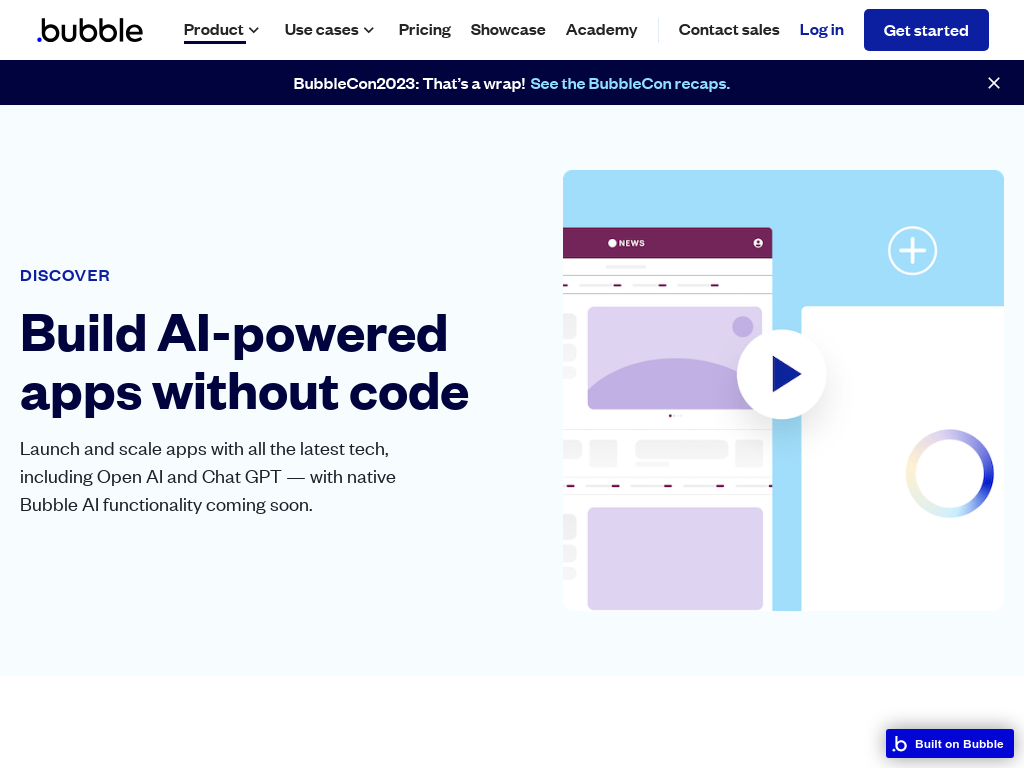
This integration enhances Bubble’s capabilities, allowing users to leverage AI for more sophisticated app development with minimal coding. The AI tools assist in automating complex tasks, optimizing user experience, and providing advanced data analytics.
This breakthrough democratizes app creation, making it more accessible and efficient, especially for entrepreneurs and small businesses. Bubble’s AI integration is a testament to the evolving landscape of digital solution development, fostering innovation and expanding the possibilities within the no code ecosystem.
FlutterFlow, in 2023, introduced an AI generator to its no code platform, significantly enhancing mobile app development. This AI integration streamlines the design and development process, enabling users to rapidly create sophisticated, custom mobile apps without deep coding expertise.
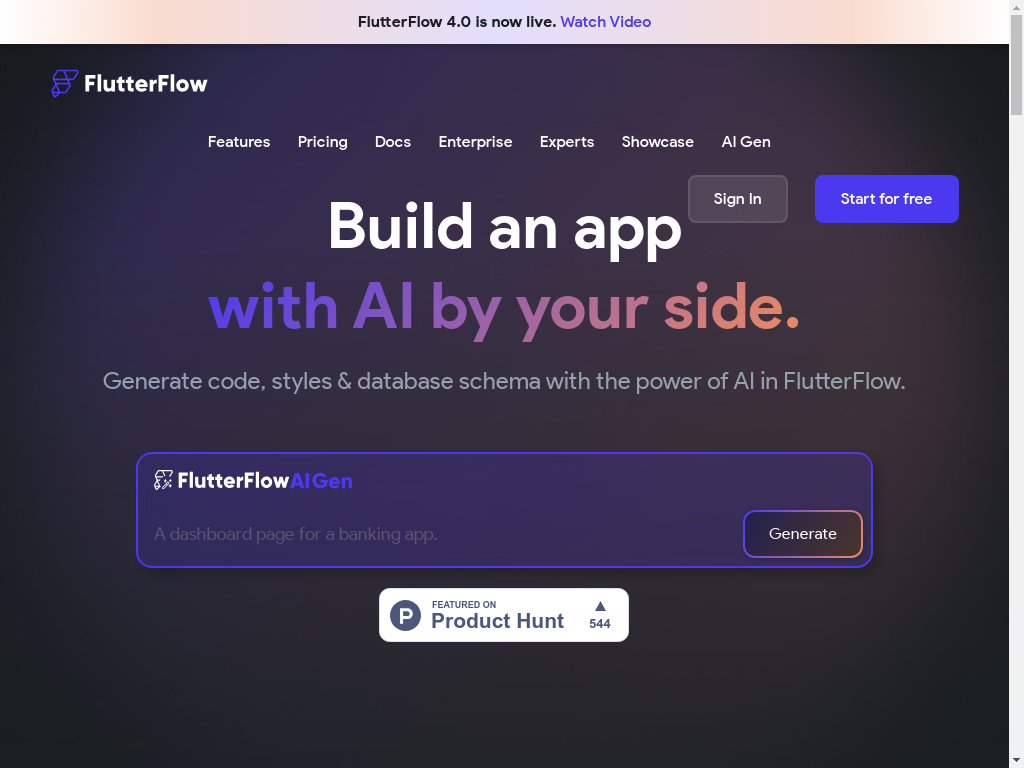
It offers intuitive visual programming, assisted by AI for layout design, feature implementation, and data management. FlutterFlow’s AI generator democratizes mobile app development, particularly benefiting entrepreneurs and small businesses, by reducing time and cost barriers.
Its impact lies in making app creation more accessible and efficient, fostering innovation and widening the scope for personalized mobile app solutions in various industries.
In 2023, large enterprises increasingly adopted no code platforms, a significant trend transforming the corporate tech landscape. This shift is driven by the need for agility, cost efficiency, and innovation in software development.
No code and low code tools like Airtable and Xano offer scalable, customizable solutions, enabling enterprises to rapidly deploy internal applications, automate workflows, and develop customer-facing platforms without extensive coding.
This adoption signifies a strategic move towards empowering non-technical staff to contribute to digital innovation, streamlining processes, and reducing reliance on specialized IT resources. The trend reflects a broader recognition of no code as a viable, efficient alternative for complex enterprise-level software development.
In 2023, Airtable pivoted towards a more enterprise-focused strategy, recognizing the growing demand for scalable, flexible no code solutions in larger organizations. Airtable Enterprise caters to this market with enhanced features that address complex operational needs.
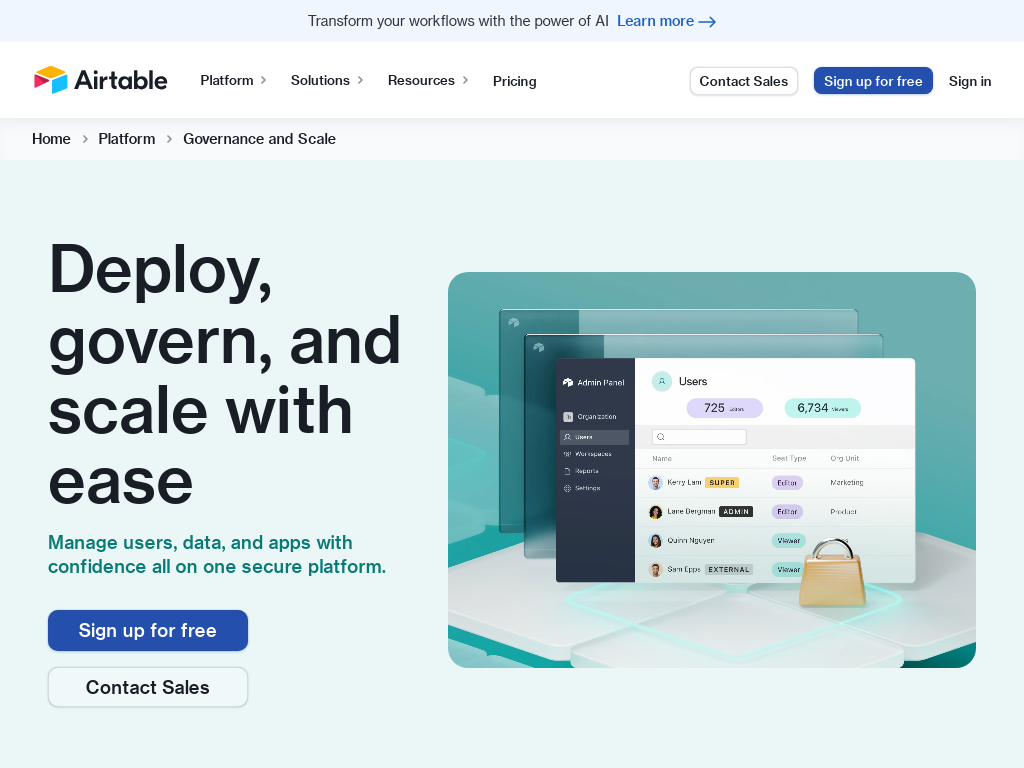
Key aspects include advanced security measures, such as single sign-on and audit logs, ensuring data integrity and compliance with corporate standards. The platform offers powerful automation and integration capabilities, allowing enterprises to seamlessly connect their existing software ecosystem with Airtable.
This integration enables streamlined workflows and improved data management across various departments. Additionally, Airtable Enterprise provides customized support and training, ensuring organizations maximize the platform’s potential.
This strategic focus on large customers signifies Airtable’s commitment to evolving beyond a tool for small teams, positioning itself as a comprehensive, robust solution for enterprise-level challenges in various industries.
In 2023, Xano solidified its role as a key player in the no code space, especially for large-scale customers. It’s recognized for its robust backend-as-a-service platform, offering scalable, secure, and customizable solutions for enterprise-grade applications.
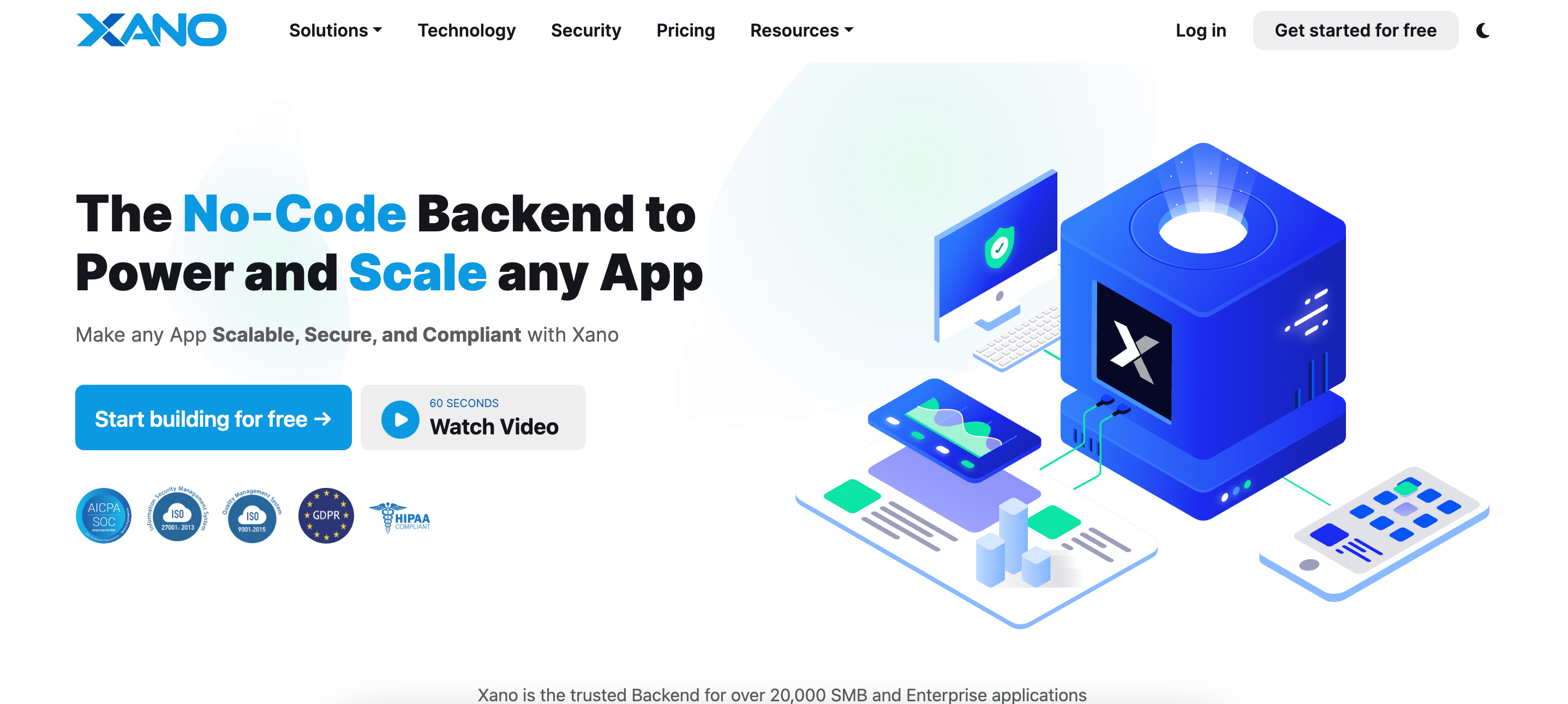
Xano enables large organizations to rapidly develop and deploy complex business applications without deep coding expertise. Its platform features API-first architecture, ensuring seamless integration with existing systems and third-party services.
This capability allows enterprises to automate workflows and manage sensitive data more efficiently. Xano’s emphasis on scalability and flexibility makes it an ideal solution for businesses seeking to innovate quickly while maintaining high performance and reliability in their digital transformation.
In 2023, the trend of enterprises adopting no or low code platforms and solutions gained significant momentum, driven by the need for agility, cost efficiency, and digital transformation.
This shift sees businesses of all sizes leveraging no code platforms to rapidly develop and deploy applications, automate workflows, and streamline data management without the need for extensive coding resources.
Key factors influencing this trend include:
These trends indicate a growing recognition of no code solutions as viable, strategic tools for enterprise-level digital transformation.
In 2023, the no code sector witnessed a series of notable acquisitions, signaling a significant phase of consolidation and maturity in the industry. These acquisitions by larger tech companies and investors were driven by the recognition of the immense potential and rapid growth of the no code market.
In a strategic move to bolster its advertising capabilities, Beehiiv, a burgeoning newsletter platform, acquired Swapstack, a no code tech platform uniquely built on Bubble. This acquisition symbolizes a significant leap in Beehiiv’s quest to revolutionize ad provision in the newsletter space.
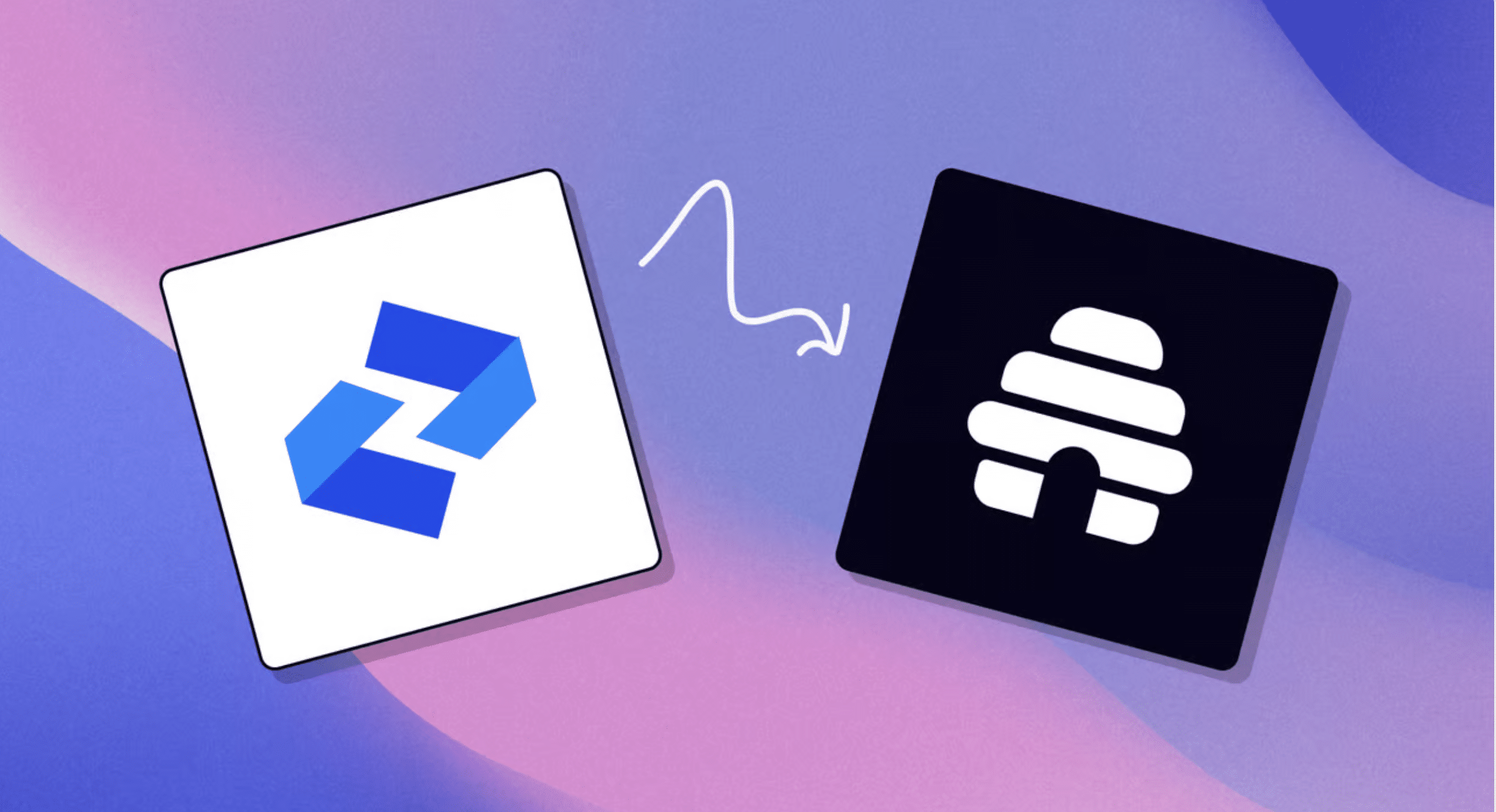
Swapstack, known for its innovative approach to utilizing Bubble’s no code technology, brings to Beehiiv enhanced agility and efficiency in ad operations. This synergy is expected to streamline ad processes, offering a more robust and user-friendly experience for advertisers and creators alike.
By harnessing Swapstack’s no code prowess, Beehiiv aims to significantly upscale its ad delivery systems, reflecting a foresighted approach in the rapidly evolving digital advertising realm.
Since its founding in 2021, Acquire.com has seen the sale of 86 no code businesses, with over half sold in the first five months of 2023[3], indicating a rapid and significant interest in the no code sector.
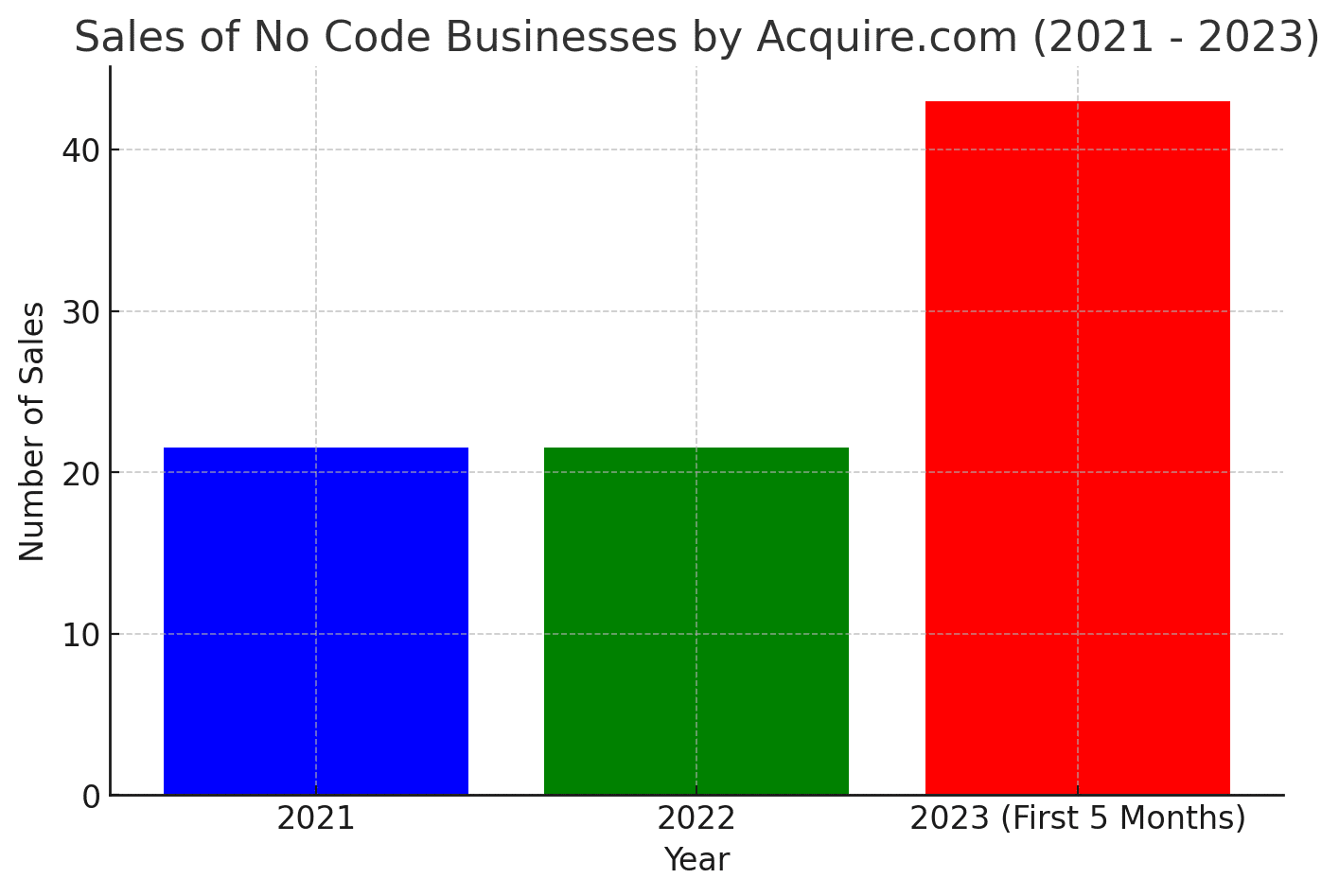
This trend is driven by the growing recognition of no code as a powerful, efficient tool for digital solution development, appealing to a wide range of buyers, from entrepreneurs to established companies.
The speed of these sales reflects the high demand for accessible, flexible technology solutions and the attractiveness of no code businesses as profitable, scalable investments.
This surge underscores the no code industry’s robust growth and its potential for continued expansion and innovation.
These acquisitions reflect a few key implications for the industry:
Overall, these acquisitions indicate the no code sector’s robust growth trajectory and its evolving role in the broader technology landscape.
In 2023, the rise of no and low code development technologies and agencies marked a significant trend in the digital services industry, reflecting the growing demand and adoption of no code solutions.

These agencies specialize in leveraging no and low code platforms to offer a range of services, catering to businesses seeking efficient, cost-effective digital solutions without the complexities of traditional software development.
Key services include:
These agencies use various platforms to turn their customers’ ideas into fully functional digital solutions. The number of the agencies of one of the most popular no code platform, Bubble, has skyrocketed in 2023 from 101 in summer 2022 to 312 in December, 2023.
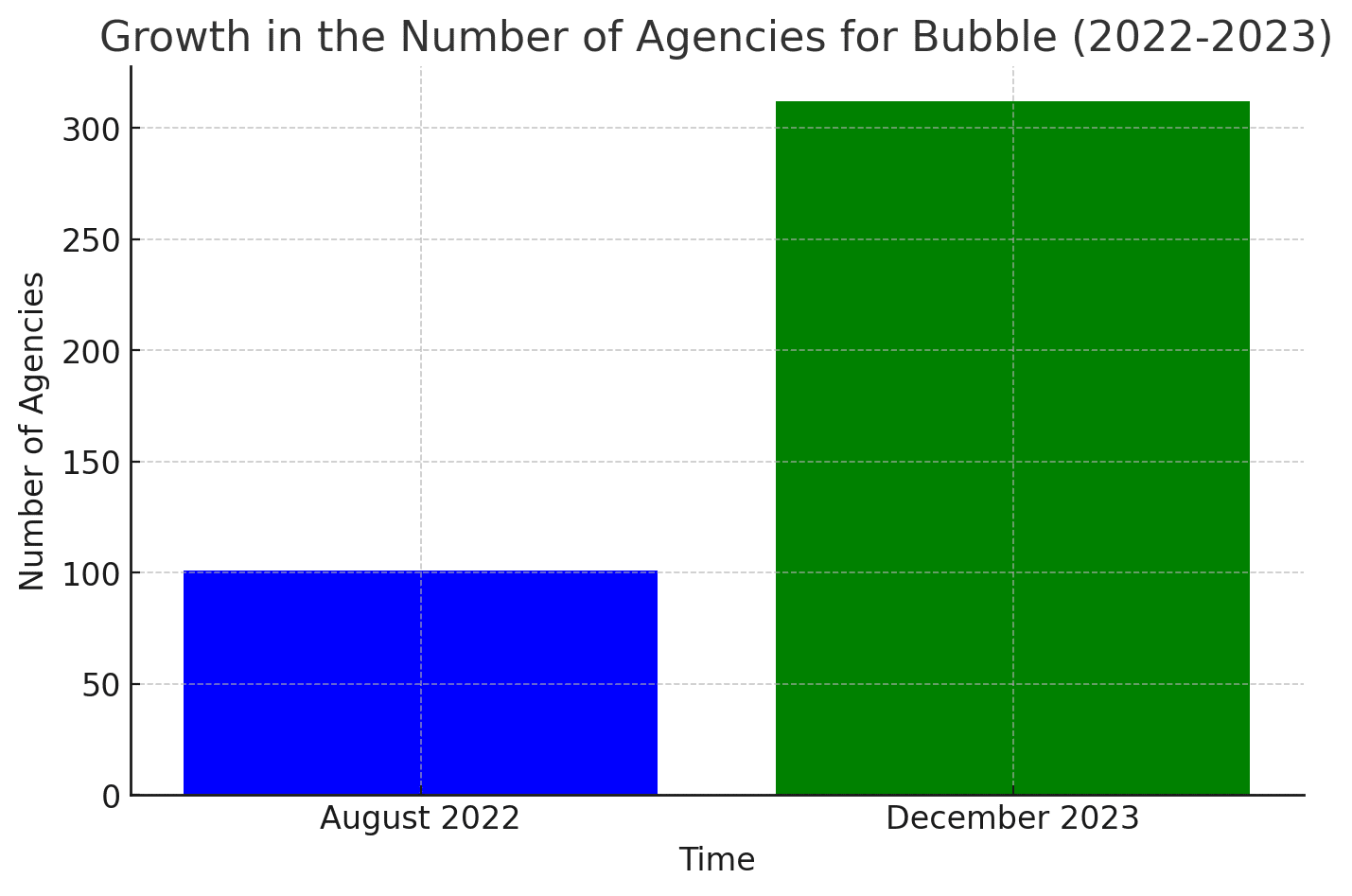
The impact of no and lo code agencies on the no code ecosystem is profound:
Overall, no and low code agencies are pivotal in broadening the adoption and understanding of no and low code solutions, shaping the future of how businesses approach and implement technology.
In 2023, the no code sector witnessed several landmark events, each contributing significant highlights and insights:
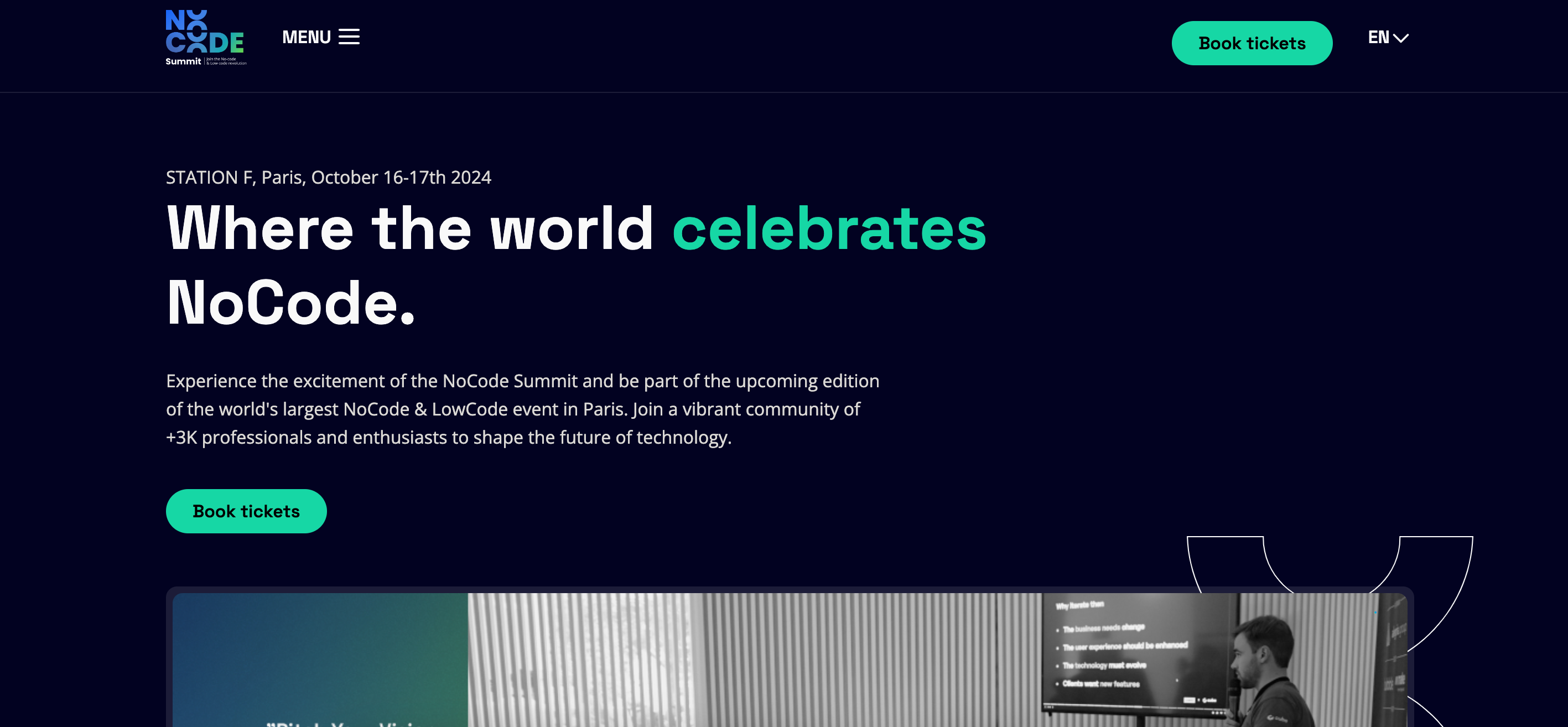
The No Code Summit 2023, a pivotal event in the no code sector, offered several key insights:
At WebflowConf 2023, Webflow announced new features enhancing website building capabilities. Key updates include native integration with Spline for 3D designs, Localization for global business customization, and the introduction of variables for design control.
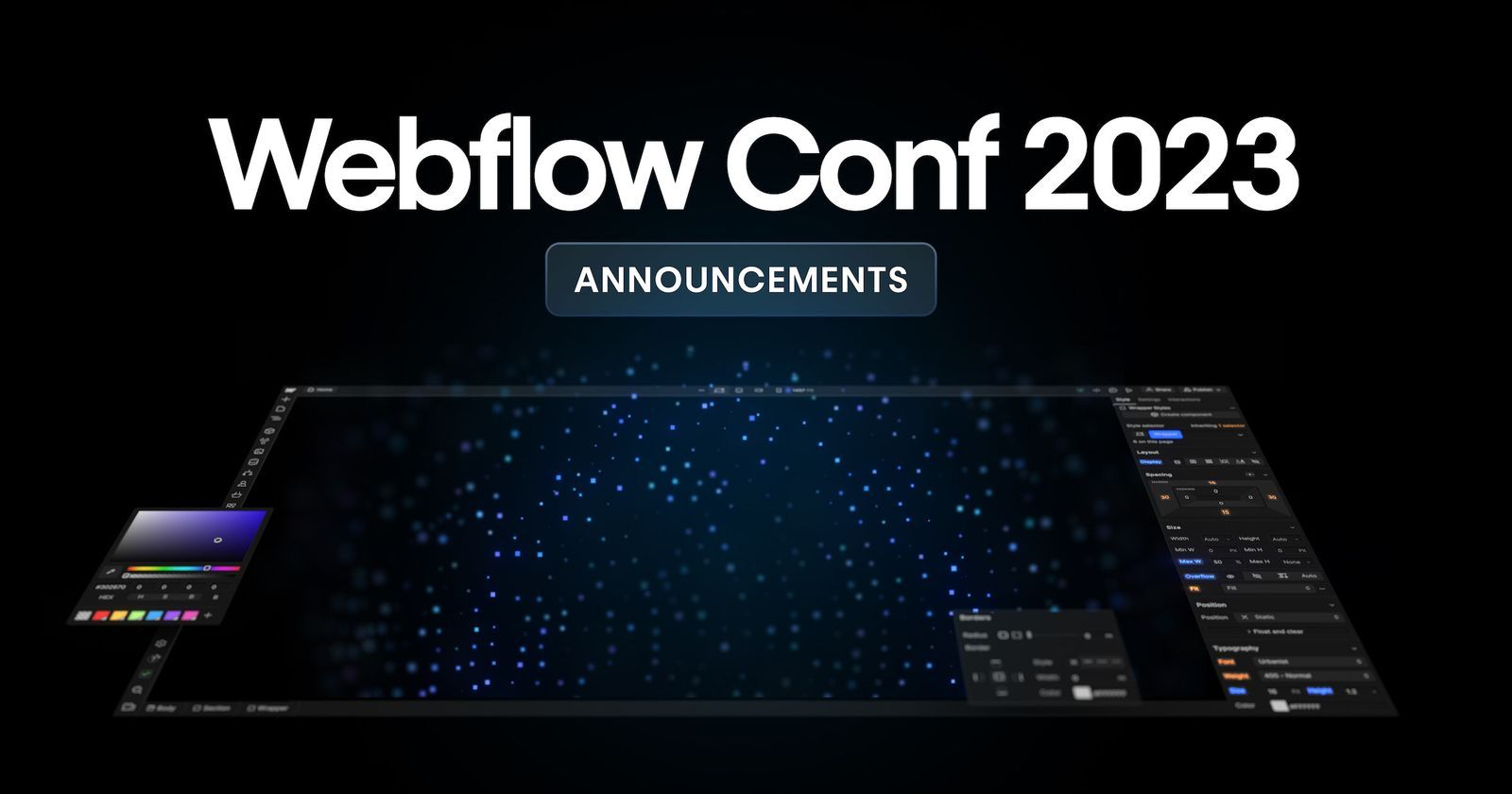
The growing Webflow Ecosystem now includes new Apps, elevating the developer platform with APIs for component and variable management. Collaboration improvements include commenting and new publishing workflows.
Additionally, Webflow unveiled a refreshed look and logo, reflecting its commitment to empowering users to build professional websites with unprecedented control and creativity.
BubbleCon made a splash with its major announcement of AI integration in Bubble’s no-code platform. This development was a significant leap, offering users AI-powered tools to create more complex and intelligent applications.

The event also highlighted success stories. Bubble’s startups have collectively raised over $15 billion, exemplifying the platform’s capacity to transform ideas into industries.
With hyper-growth being the new norm, Bubble apps frequently reach 100K users in under 5 months. And talking about growth – Bubble has hit 120 million users, showcasing its scalability and revolutionizing capabilities.
No doubt the energy at BubbleCon was electric, highlighting Bubble’s impact and innovation.
At the Make.com Waves 2023 event, the focus was on the evolution and expansion of automation capabilities within the no code space. Make.com, formerly Integromat, announced new integrations and features aimed at simplifying and enhancing workflow automation for businesses.
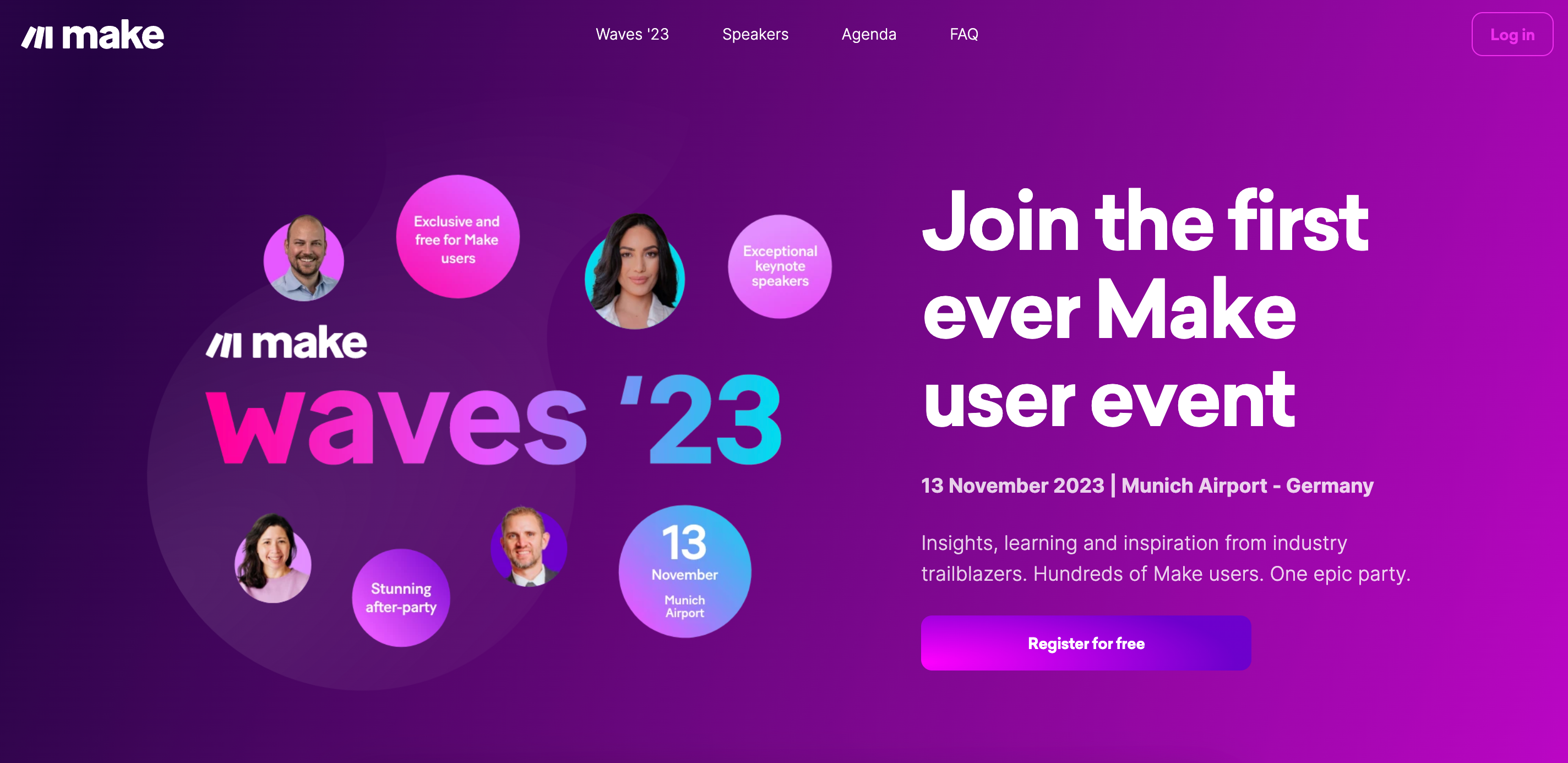
Waves ’23 included a welcome by CEO Fabian Veit, discussing automation’s opportunities and challenges. Nina Schick joined Fabian in a conversation on technology’s role in shaping our world. Darin Patterson unveiled Make’s evolving product vision.
Later, attendees chose between various sessions, including product updates, discussions on AI and automation, and insights into professional branding on LinkedIn. The event featured a Super User Showcase, scenario competitions, and a provocative look at FINN’s journey with automation.
It concluded with previews of Make’s roadmap and a fireside chat, emphasizing the critical role of technology in modern business.
ZapConnect 2023 centered around Zapier’s role in connecting various apps and services through no code automation. Highlights included the introduction of new, more sophisticated Zapier integrations, enabling users to automate increasingly complex tasks across different platforms.
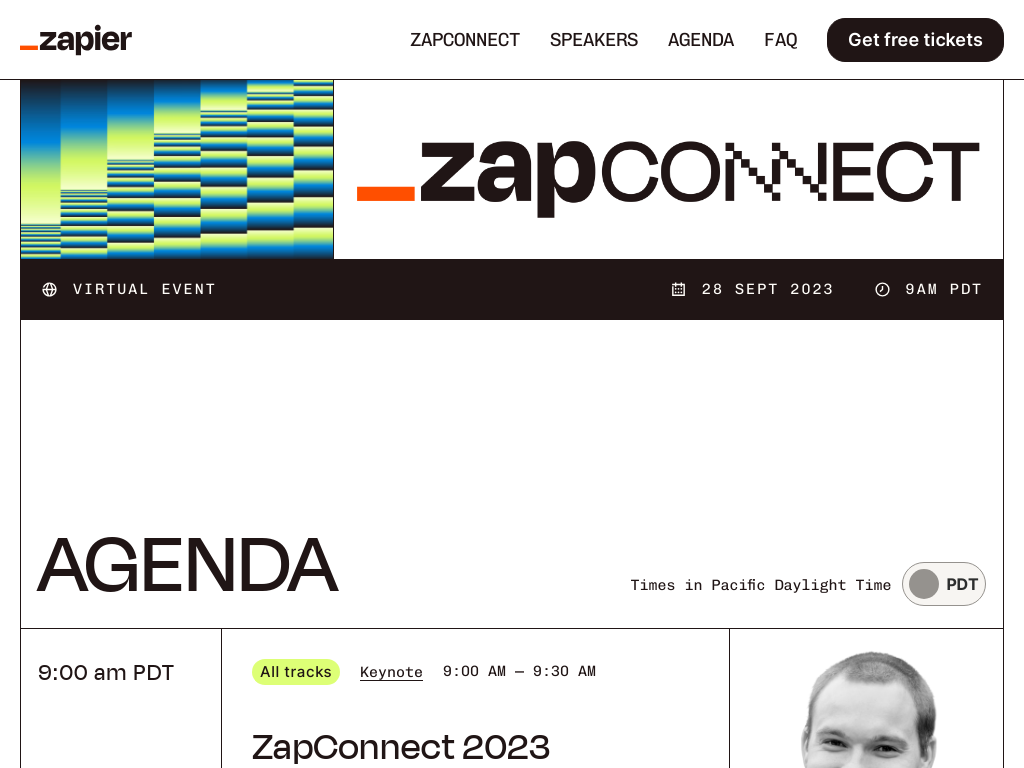
ZapConnect featured a keynote with insights from Zapier CEO Wade Foster, highlighting new innovations for success. Sessions included learning about Zapier tables and interfaces, building integrations, growing marketing and sales processes, and tracking digital ad performance with AI.
Other topics covered automating with pre-built apps, integrating AI in workflows, building customer trust, identifying automation opportunities, and writing effective prompts for AI chatbots.
The conference also discussed leveraging AI in entrepreneurship, mastering multistep Zaps, customizing Zap actions, amplifying CRM impact, streamlining tasks with the ChatGPT plugin, and implementing marketing automation best practices.
Overall, these events in 2023 reflected a maturing no code industry, focusing on AI integration, enhanced automation capabilities, and user accessibility.
These developments signify a shift towards more sophisticated, user-friendly platforms, indicating a bright future for the no code movement, where technology creation becomes more inclusive and efficient.
In 2023, there was significant no code development, characterized by AI integration, increased enterprise adoption, and the rise of specialized no code agencies.
Key platforms like Airtable, Xano, and Bubble introduced powerful AI functionalities, enhancing user experience and expanding capabilities.
The sector also saw a trend towards serving larger enterprises, indicating scalability and robustness of no code solutions. The growth of no code agencies further democratized technology, making it accessible to a wider audience.
Looking ahead, these trends suggest a future where no code solutions become integral to digital transformation, driving innovation and efficiency across industries and empowering users with diverse technical backgrounds.